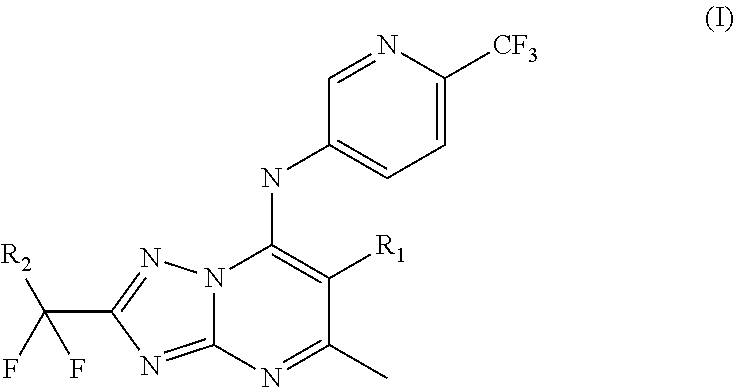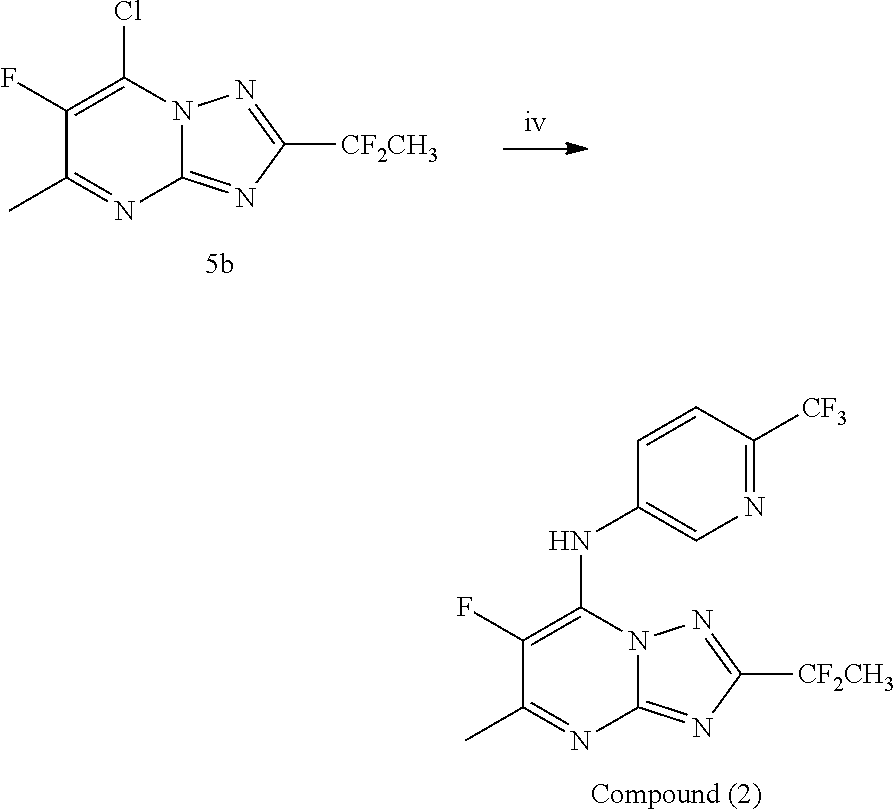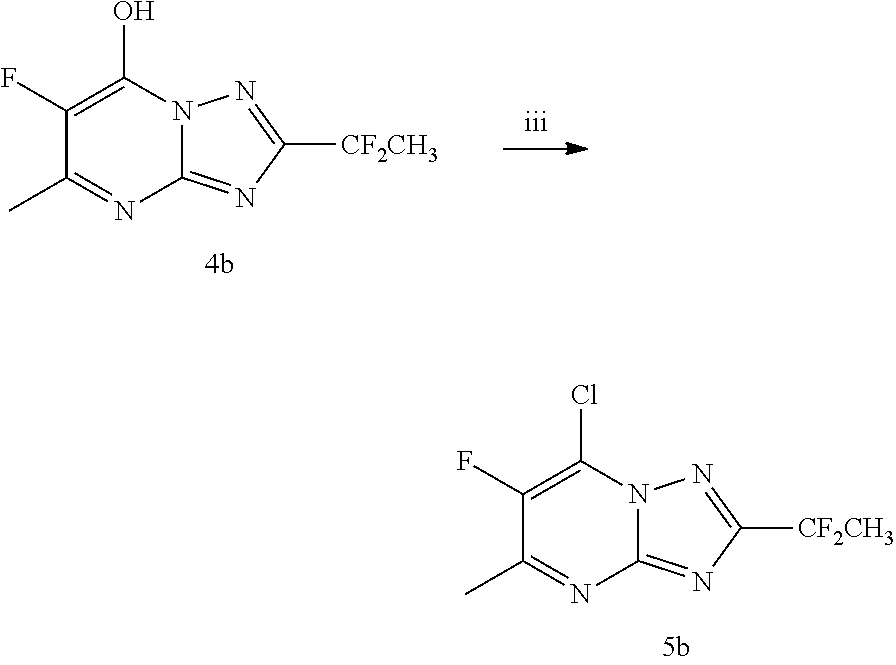New substituted triazolopyrimidines as Anti-malarial agents
a triazolopyrimidine and anti-malarial agent technology, applied in the field of new substituted triazolopyrimidines as anti-malarial agents, can solve the problems of compromising many of the current chemotherapies, affecting the safety of patients, so as to improve the selectivity of inhibition and improve the solubility
- Summary
- Abstract
- Description
- Claims
- Application Information
AI Technical Summary
Benefits of technology
Problems solved by technology
Method used
Image
Examples
example 1
Synthesis of Compounds According to the Invention
[0093]The triazolopyrimidine derivatives can be prepared from readily available starting materials using methods and procedures known from the skilled person. It will be appreciated that where typical or preferred experimental conditions (i.e. reaction temperatures, time, moles of reagents, solvents etc.) are given, other experimental conditions can also be used unless otherwise stated. Optimum reaction conditions may vary with the particular reactants or solvents used, but such conditions can be determined by the person skilled in the art, using routine optimisation procedures. The title compounds of the invention are synthesized as described in the general synthetic route, Scheme 1 below.
2-(1,1-difluoroethyl)-5-methyl-N-(6-(trifluoromethyl)pyridin-3-yl)-[1,2,4]triazolo[1,5-a]pyrimidin-7-amine (Compound (1))
[0094]
[0095]The title compound of the invention was synthesized as described in Scheme 1 above wherein intermediate 1 is such th...
example 2
Antimalarial Activities of Compounds of the Invention
[0123]The ability of triazolopyrimidine derivatives according to the invention to kill P. falciparum parasites and / or to inhibit its proliferation is assayed through their ability to inhibit Plasmodium falciparum growth. The growth inhibition assay is as follows: P. falciparum 3D7 cells were grown in Gibco-Invitrogen RPMI-1640 supplemented with 2% (w / v) red blood cells (RBCs) and either 20% human type A+ plasma (Desjardins et al., 1979, Antimicrob Agents Chemother. 16, 710-718) or with Gibco-Invitrogen 0.5% Albumax I (Coteron et al., 2011, J. Med. Chem., 54, 5540-5561). Serial dilutions of compound stocks were prepared in 100% DMSO at 200× the final concentration, followed by generation of 20× stocks in media. Cell growth was monitored by the SYBR green method as described (Deng, et al., 2014. J. Med. Chem., 57, 5381-539). Parasites (0.19 ml of 0.5% parasitemia, 0.5% HCT) were plated into 96-well microtiter plates containing 10 μL...
example 3
Aqueous Solubility of Compounds of the Invention
[0128]Aqueous solubility was estimated by nephelometry. Concentrated stock solutions were prepared in DMSO and diluted into either pH 6.5 phosphate buffer or 0.01 M HCl (approximately pH 2.0), with the final DMSO concentration being 1%. Samples were then analyzed by nephelometry to determine the solubility range as described previously (Bevan, et al., 2000, Anal. Chem., 72, 1781-1787). The solubility results are presented in Table 1 below.
TABLE 1Pf 3D7KineticEC50PfDHODHSolubilityCompound(nM)(nM)h / d / m / r DHODH (μM)pH6.5 (μg / ml)(1)1130>100, 65, 54, 24>100(2)162362, 9.2, 20, 15.7>100(3)3541>100, 39, 33, 8.450Reference 1205058, 21, 74, 4.46.3Reference 27037>50, nd, nd, nd1.6Reference 38.331>100, >100, 24, 7.250Reference 45.033>100, 17, 2.7, 2.225
PUM
| Property | Measurement | Unit |
|---|---|---|
| temperature | aaaaa | aaaaa |
| flow rate | aaaaa | aaaaa |
| temperature | aaaaa | aaaaa |
Abstract
Description
Claims
Application Information
 Login to View More
Login to View More - R&D
- Intellectual Property
- Life Sciences
- Materials
- Tech Scout
- Unparalleled Data Quality
- Higher Quality Content
- 60% Fewer Hallucinations
Browse by: Latest US Patents, China's latest patents, Technical Efficacy Thesaurus, Application Domain, Technology Topic, Popular Technical Reports.
© 2025 PatSnap. All rights reserved.Legal|Privacy policy|Modern Slavery Act Transparency Statement|Sitemap|About US| Contact US: help@patsnap.com



